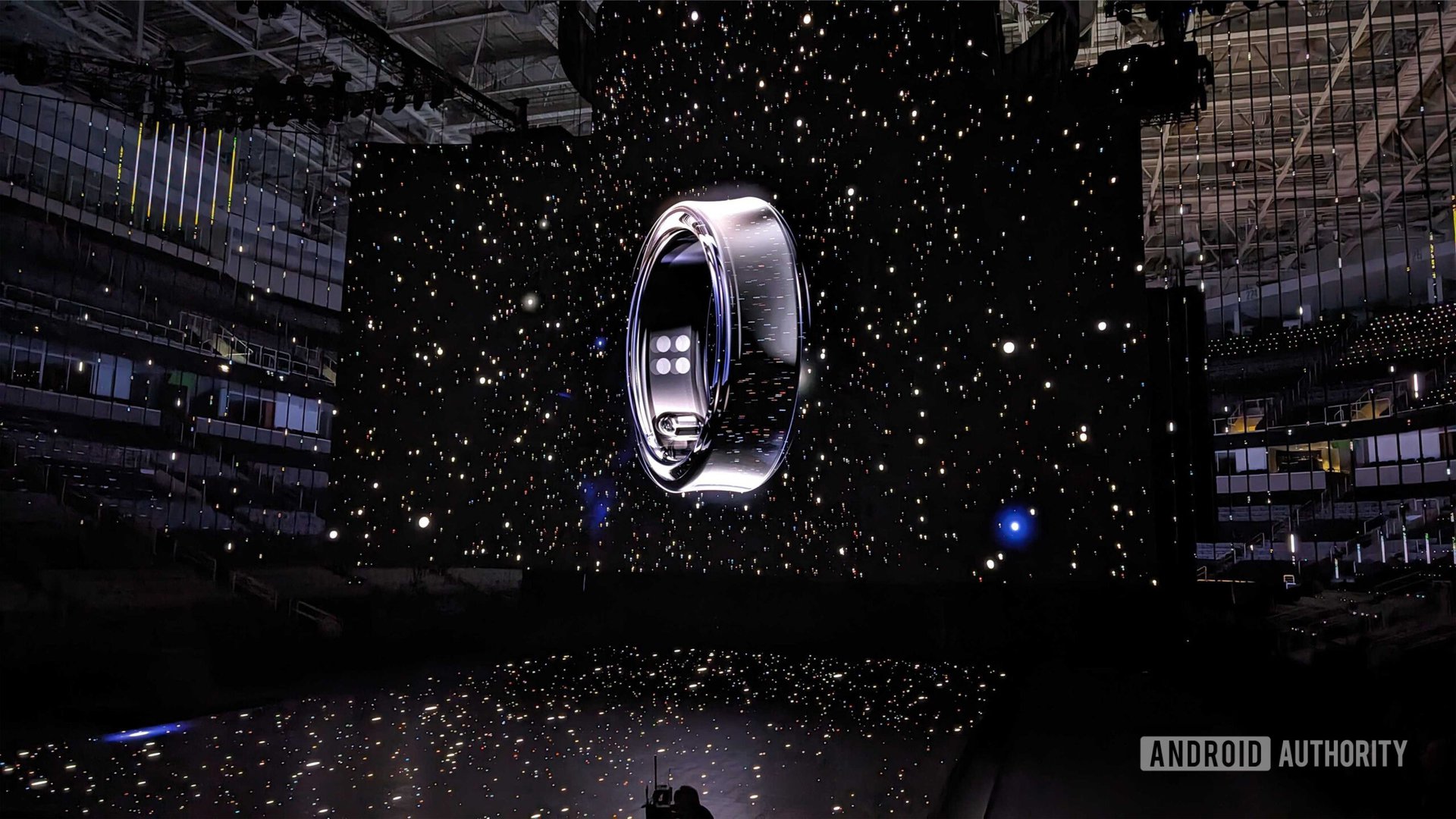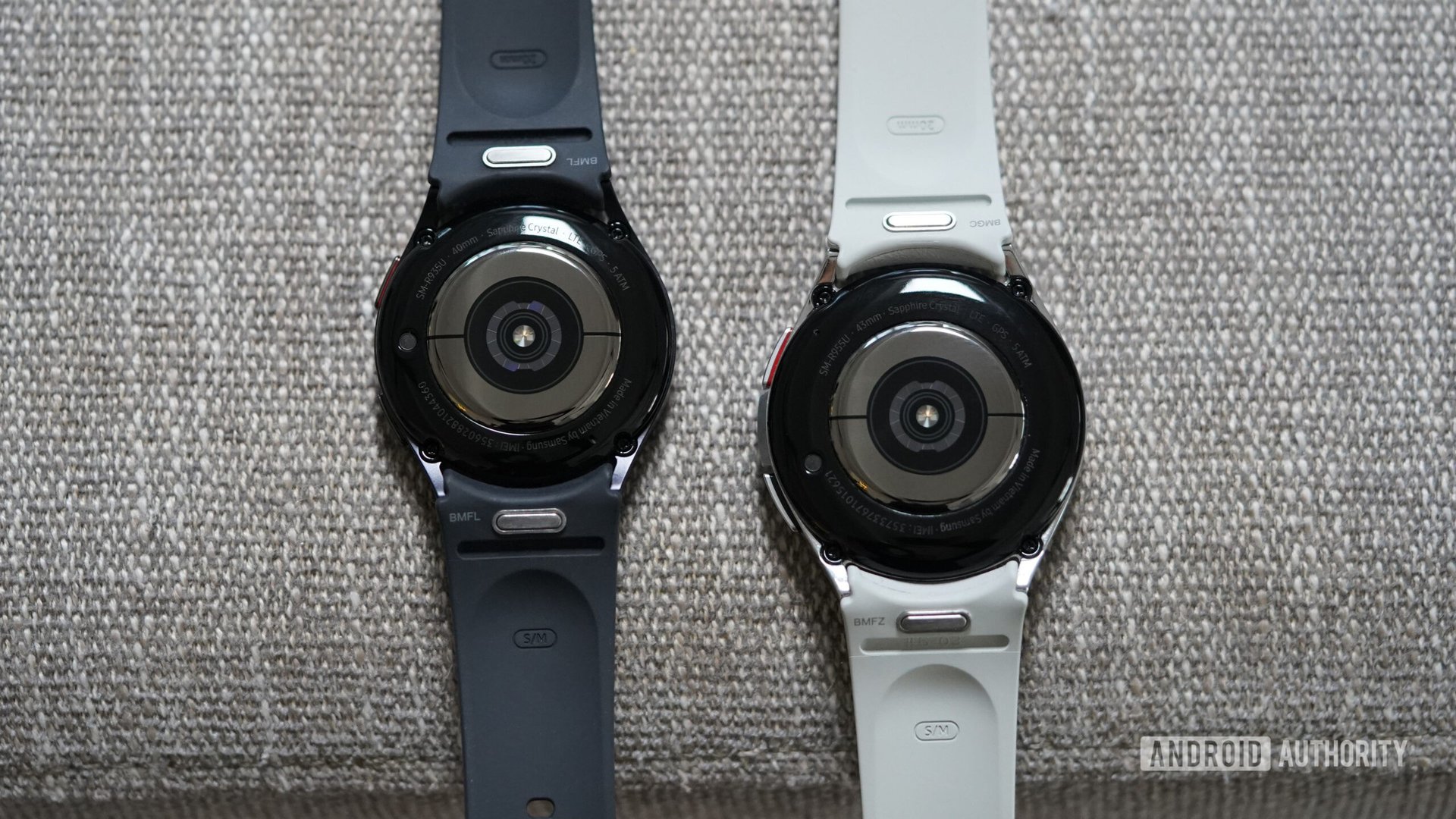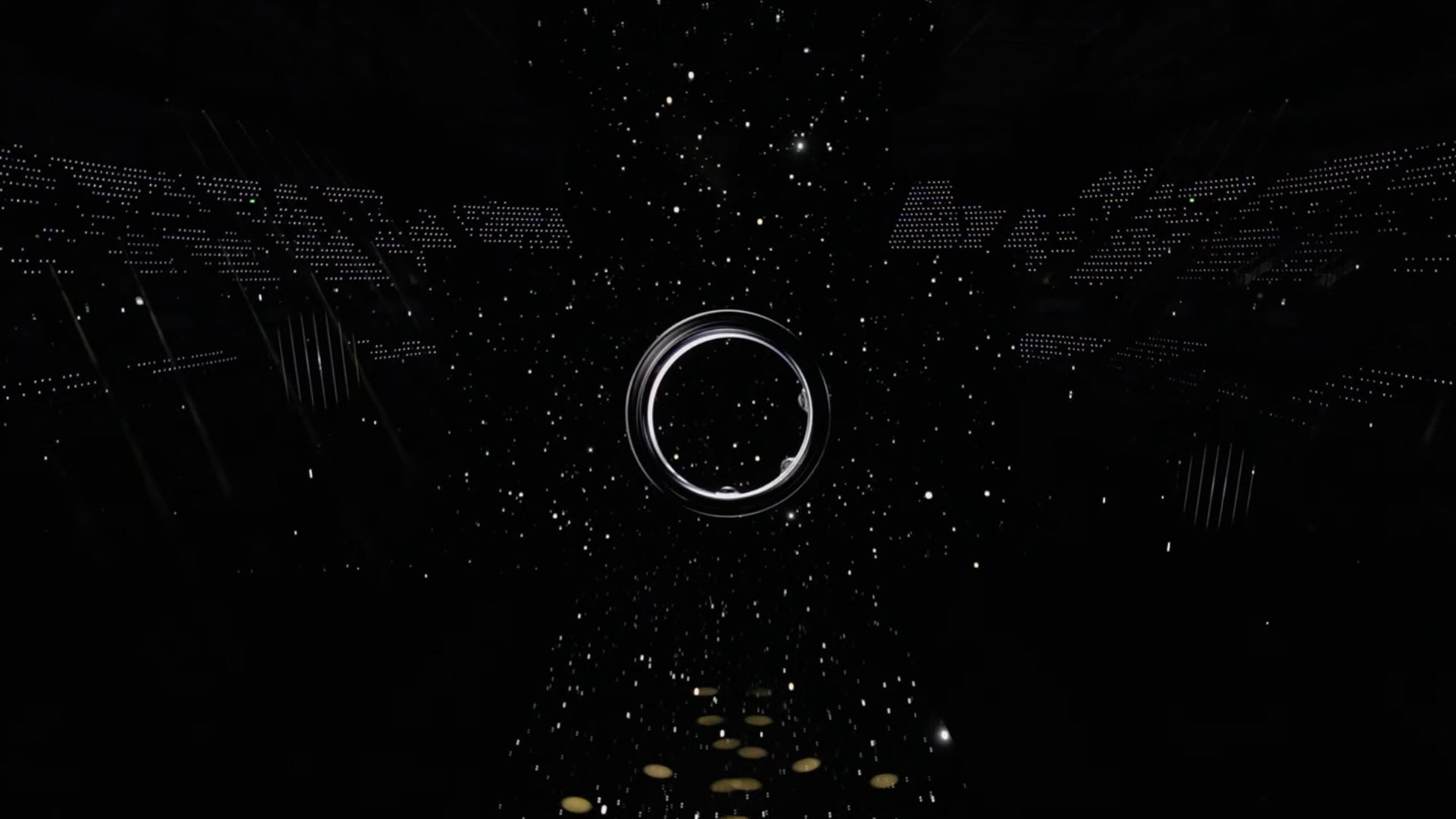Samsung officially confirmed an upcoming Samsung Galaxy Ring at its Unpacked event on January 17. The announcement arrived after a short promo video for Samsung Health featuring a Neanderthal representing our “ancient instincts.” At the end of the video, the character remarks on Samsung Health’s new AI tools and then asks, ” I wonder what will come next,” casually transitioning to what we now know to be the Ring’s unveiling. If you were looking closely, you would have realized the answer was literally written in the stars; the sun he admires is a ring-shaped eclipse rather than a full sun.
While we now have the answer to what comes next, Samsung was not generous with details, offering heroic images of the new device spinning among the cosmos but few additional details. Sure, “a picture is worth a thousand words,” but I would have loved more actual words, like hard-hitting specs or a potential launch date. What is actually coming next on this miniaturized fitness tracker? Left with little to go off, my hopes for the Samsung Galaxy Ring are still in full bloom.
Samsung offered few details so my hopes for the Galaxy Ring are still in full bloom.
Above all, I expect the new device to deliver advanced health tracking despite its minimal real estate. Samsung characterized the ring as “a powerful and accessible health and wellness device.” For me, that claim necessitates accurate heart rate tracking as well as sleep, stress, SpO2, and temperature monitoring, specifically for detailed women’s health tracking. Oura has already proven that these metrics are viable on a finger-based wearable, and I don’t see Samsung launching a device that doesn’t at least match the current smart ring competition.

Kaitlyn Cimino / Android Authority
As the ring revolved in space during the presentation, we were able to glimpse three oval bumps similar to the infrared sensors found on Oura’s latest model. Though slightly different in shape than Oura’s perfectly round bumps, I expect these bulbous sensors to provide similar data (and similarly impact the ring’s fit). Personally, I have absolutely crushed my knuckle trying to get my Oura Ring off in a hurry, so PSA: make sure the sensors are always on the underside of your finger. We didn’t get a demo of red or green flashing lights, but it’s pretty safe to assume the ring will feature both LEDs.
I would also bet my hat that the ring will feature basic activity sensors like a gyroscope and an accelerometer. All of these can already be found in Samsung Galaxy Watches and represent the foundational hardware of a solid fitness tracker.
Samsung’s teaser suggests the Galaxy Ring will have the necessary sensors for advanced health and fitness tracking, including bulbous infrared sensors.
What’s interesting to imagine is whether Samsung will bring even more to the smart ring landscape on the health and fitness front. For example, digital payment support would be a useful addition to the finger-based market. Likewise, I would love to see ECG capabilities replicated from the brand’s smartwatch line.
I’d also like to see Samsung’s ring offer a more complete fitness tracking experience to make it more attractive for athletes. Oura automatically tracks all movement, but it doesn’t provide the same training analysis Samsung currently offers on Galaxy Watches. I would like to see Samsung leverage its ring’s sensors and the AI capabilities now available within Samsung Health to elevate the fitness tracking potential of the smart ring arena.

Kaitlyn Cimino / Android Authority
Unfortunately, one major drawback of the ring is, of course, the space companies have to work with when adding extra functionality. Packing the sensor package found on a watch into a tiny ring is no small feat. Couple this with the fact that I’m dying for a more petite option than the current market has to offer, and I realize asking for more and more features is a contradiction.
Still, my pie-in-the-sky dream for Samsung’s Galaxy Ring is that it will somehow feature built-in GPS. Given the limits of space and power, this is unlikely, but it does bring me to battery life. To be successful, the Galaxy Ring must offer at least the same battery specs as the Oura Ring, which should be around a week. Smart rings don’t feature screens, which offers many benefits, but it can be very easy to mismanage your charging schedule and not realize your device is dead or dying. Week-long battery life gives users plenty of time to plug in or at least top up while showering. Anything less, and I’m not adorning one of my ten fingers for it.
To earn a consistent place on my crowded fingers, the Galaxy Ring must offer at least week-long battery life.
Likewise, the Galaxy Ring will most likely feature wireless charging like the Oura Ring, and I hope it is efficient. During the presentation, we saw four metallic contact points on the inside of the device, similar to the eight identical dots found inside the Oura Ring 3. These are more likely for manufacturing purposes than charging. Again, with similar nodes to the Oura Ring, I expect a similarly shaped charger.

What I really don’t want to see is Samsung mimicking Oura in price. Samsung Galaxy Watches historically land around the 300 dollar mark, with upcharges for Classic or Pro models. I hope the company maintains this relatively approachable price point. More importantly, I will be extremely disappointed if Samsung introduces a subscription fee. This practice is the bane of the wearables market and a major hindrance to accessibility. Although it’s sometimes justifiable for smaller companies that need extra resources to survive, it’s not something Samsung should ever resort to. Plus, the company must know that saving up for a new fitness tracker is one thing, but committing to an ongoing purchase is a much harder pill to swallow.
Either way, we should hopefully know more later this year. Samsung typically launches its newest Galaxy Watch in late July each year, and I’d expect to find out more details about the Ring then (if not officially see the Ring’s launch). For now, I’m keeping an ear out for more leaks, rumors, and announcements going forward.
Comments








